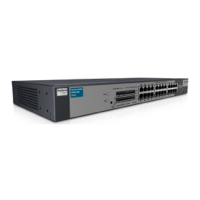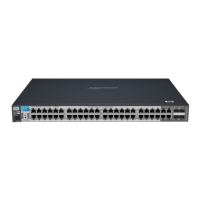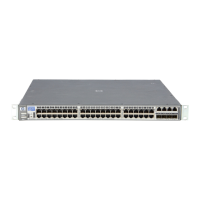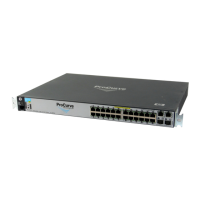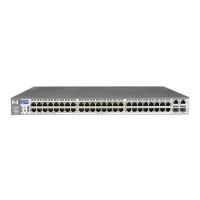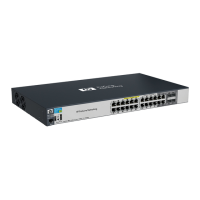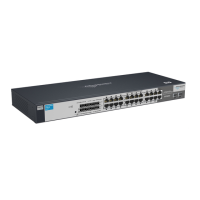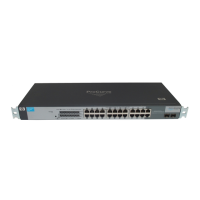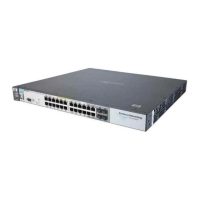2-12
Static Virtual LANs (VLANs)
Port-Based Virtual LANs (Static VLANs)
1. The packet enters VLAN 1 in the Switch 8000 with the multiple-forwarding
database switch MAC address in the destination field. Because the 8000M
has not yet learned this MAC address, it does not find the address in its
address table, and floods the packet out all ports, including the VLAN 1
link (port “A1”) to the multiple-forwarding database switch. The multiple-
forwarding database switch then routes the packet through the VLAN 2
link to the 8000M, which forwards the packet on to PC “B”. Because the
8000M received the packet from the multiple-forwarding database switch
on VLAN 2 (port “B1”), the 8000M’s single forwarding database records
the multiple-forwarding database switch as being on port “B1” (VLAN 2).
2. PC “A” now sends a second packet to PC “B”. The packet again enters
VLAN 1 in the Switch 8000 with the multiple-forwarding database switch’s
MAC address in the destination field. However, this time the Switch
8000M’s single forwarding database indicates that the multiple-forward-
ing database switch is on port B1 (VLAN 2), and the 8000M drops the
packet instead of forwarding it.
3. Later, the multiple-forwarding database switch transmits a packet to the
8000M through the VLAN 1 link, and the 8000M updates its address table
to indicate that the multiple-forwarding database switch is on port A1
(VLAN 1) instead of port B1 (VLAN 2). Thus, the 8000M’s information on
the location of the multiple-forwarding database switch changes over
time. For this reason, the 8000M discards some packets directed through
it for the multiple-forwarding database switch, resulting in poor perfor-
mance and the appearance of an intermittent or broken link.
The Solution. To avoid the preceding problem, use only one cable or port
trunk between the single-forwarding and multiple-forwarding database
devices, and configure the link with multiple, tagged VLANs.
Figure 2-2. Example of a Solution for Single-Forwarding to Multiple-Forwarding
Database Devices in a Multiple VLAN Environment
Switch 8000M
VLAN 1
VLAN 2
Multiple-Forwarding
Database Switch
(Routing Enabled)
VLAN 1
VLAN 2
This switch has multiple
forwarding databases.
This switch has a single
forwarding database.
PC “A”
PC “B”
VLAN
1 & 2
VLAN
1 & 2
A1
C1
